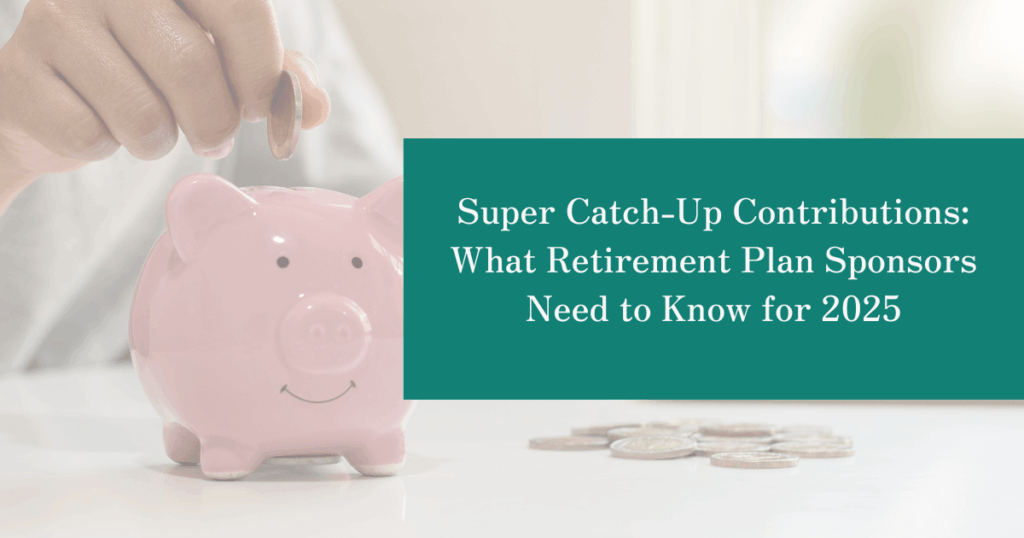An employee ownership mentor taught me years ago to build with the end in mind. This is an important concept for companies designing their defined contribution plans. How important is employee satisfaction to your company’s growth path? Which plan design options will be most appreciated by your employees? Companies want to be generous to employees, but limits and costs must be measured.
401(k) Plan Design
Almost all employee-owned companies offer 401(k) Plans so their employees can save for their retirement in a tax-efficient manner. It is prudent because the future value of ESOP accounts are uncertain and 401(k)s offer diversified investment opportunities. The first question for the company is whether it can afford to fund a 401(k) match or non-elective contribution in addition to the ESOP contribution. If the company can afford it, there are several 401(k) formulas that can encourage employees to participate and make them satisfied with their benefits. Some of these formulas are beneficial to the plan sponsor by eliminating the normal ADP/ACP testing and pesky after-tax refunds that annoy highly compensated employees. Here are some common “safe harbor” 401(k) formulas that prevent ADP/ACP testing, but are 100% vested immediately:
- The basic match is dollar for dollar on the first 3% of compensation deferred by a participant plus 50% of the next 2% of compensation contributed. For a participant deferring 5% or more of compensation, the maximum match is 4% of compensation.
- An enhanced match of 100% of the first 4% deferred by the participant is another option.
- 3% (or greater) of each participant’s compensation. This is called a non-elective contribution and it can be limited to just non-highly compensated employees.
There are also some newer alternatives for companies that feel 100% vesting immediately is too generous. Under a qualified automatic contribution arrangement (QACA), the company contributions do not have to be fully vested until after two years. The safe harbor contributions under this arrangement are coupled with an automatic enrollment feature to prod employees to save for their retirement on a default basis. QACA arrangements are similar to traditional safe harbor formulas, but the basic match is different. The basic QACA match is dollar for dollar on the 1% of compensation deferred, plus 50% of the next 5% of compensation deferred by the participant. For a participant deferring 6% or more of compensation, the maximum match is 3.5% of compensation. Automatic enrollment can start at 3% or more of compensation and must escalate by 1% per year until reaching 6%, but not more than 10% of pay. In order to avoid a rash of payroll questions each year, some HR Managers prefer to set the default rate at 6% when the employee starts work so there is no change in net pay each year. Employees can reduce or suspend these deferrals, but they need to take the initiative themselves.
How can your 401(k) impact your company culture?
Employees expect their employer to offer a 401(k) plan, and some even expect a company match. Generally, the more generous the match or non-elective contribution, the happier your employees will be. Individual employee satisfaction with your 401(k) program has a lot to do with how your program compares to previous employers. Employees also compare your 401(k) program to 401(k) offerings with those of friends’ companies. It may not be fair to make these comparisons, but this is reality.
ESOP companies cannot always afford a 401(k) match if they are offering a generous ESOP contribution. We have seen ESOP companies successfully communicate this situation by reminding employee-owners that WE are paying down the debt on their ESOP loan so a 401(k) match is not possible at this time. ESOP companies can create a team atmosphere; i.e. we are all in this together paying down the ESOP debt. An “all oars in the water pulling together” mantra can focus employee-owners on growing revenue and cutting costs. Some ESOP companies integrate their plans by making the 401(k) match in the ESOP. Sometimes this strategy can achieve the best of both worlds. Showing your employees a total benefit statement itemizing all of the benefits that the company pays for is also a great reminder for employees, but be careful how you present it, as some employees may get offended and feel that they are not being appreciated. Finally, do not forget to remind them of the other things that make your organization a great place to work.




